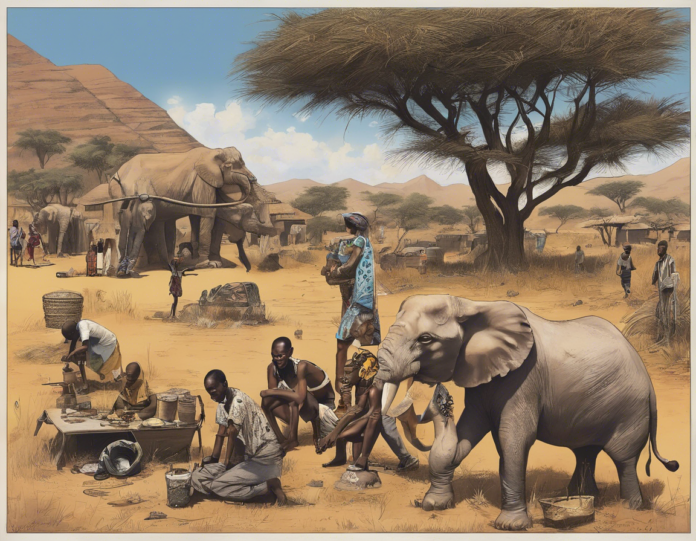Derek Walcott, the acclaimed Caribbean poet and playwright, is known for his complex and multi-layered works that explore themes of identity, colonialism, and cultural heritage. One of his most famous poems, “A Far Cry from Africa,” is a powerful and introspective piece that delves into the complexities of race, violence, and the legacy of colonialism in Africa.
In this article, we will revisit “A Far Cry from Africa” by Derek Walcott, exploring its themes, symbolism, and historical context to gain a deeper understanding of this seminal work.
Historical Context:
Written in 1962, “A Far Cry from Africa” reflects the turbulent political climate of the time, with many African nations gaining independence from European colonizers. Walcott, who was of Afro-Caribbean descent, grapples with his own identity in relation to the struggles of the African continent, torn apart by colonialism and violence.
Themes:
-
Identity and Belonging: Walcott explores the complexities of his dual identity as a Caribbean native with African roots. The poem reflects on the shared history of displacement and colonization experienced by people of African descent across the diaspora.
-
Violence and Conflict: The poem vividly depicts the brutal nature of violence and conflict, both in Africa and the Caribbean. Walcott confronts the ethical dilemmas of using violence as a means of resistance and the lingering trauma it inflicts on societies.
Symbolism:
-
Leopard: The image of the leopard symbolizes the predatory nature of colonization and the brutal legacy of violence that continues to haunt Africa. The leopard represents the forces of destruction and chaos unleashed by colonial powers.
-
Blood: Blood imagery permeates the poem, symbolizing the shared history of suffering and sacrifice endured by people of African descent. The blood shed in violence becomes a metaphor for the deep wounds of colonization that have yet to heal.
Poetic Devices:
-
Enjambment: Walcott employs enjambment to create a sense of continuity and fluidity in the poem, mirroring the interconnectedness of the African diaspora and the ongoing struggles for liberation.
-
Repetition: The repeated use of phrases like “the fable of the hunter,” “the hand that holds the pen,” and “the landscapes of your dream” adds a rhythmic quality to the poem and underscores its central themes.
Interpretation:
“A Far Cry from Africa” is a deeply introspective and thought-provoking piece that invites readers to confront the enduring legacies of colonization, violence, and identity. Walcott’s exploration of these themes resonates with readers across diverse cultural backgrounds and continues to provoke critical conversations about the complexities of race and heritage.
Frequently Asked Questions (FAQs):
1. What is the central message of “A Far Cry from Africa” by Derek Walcott?
The central message of the poem revolves around the complexities of identity, violence, and the legacy of colonialism in Africa and the Caribbean. Walcott grapples with his own heritage and the shared history of displacement and suffering experienced by people of African descent.
2. How does Derek Walcott use symbolism in “A Far Cry from Africa”?
Walcott employs symbolism, such as the image of the leopard and the motif of blood, to convey deeper meanings about colonization, violence, and resistance. These symbols add layers of complexity to the poem and invite readers to interpret its themes in a nuanced way.
3. What poetic devices does Derek Walcott use in “A Far Cry from Africa”?
Walcott utilizes poetic devices like enjambment and repetition to create rhythm, imagery, and thematic depth in the poem. These devices enhance the overall impact of the work and contribute to its nuanced exploration of complex themes.
4. How does “A Far Cry from Africa” reflect the historical context of its time?
Written in 1962, “A Far Cry from Africa” reflects the post-colonial era in Africa and the Caribbean, with many nations gaining independence from colonial powers. The poem engages with the political and social upheavals of the time, addressing themes of liberation, violence, and cultural identity.
5. Why is “A Far Cry from Africa” considered a seminal work in Derek Walcott’s oeuvre?
“A Far Cry from Africa” is considered a seminal work in Walcott’s career due to its powerful exploration of themes like identity, violence, and colonialism. The poem showcases Walcott’s unique poetic voice and his ability to delve into complex issues with depth and nuance.

